Cracksealing
Request a QuoteCracksealing Services by Rose Paving
Cracksealing is a preventative asphalt maintenance solution that fights pavement erosion and supports the longevity of your parking lot. It’s also an effective way to minimize damage to your pavement, delay asphalt replacement and maintain the aesthetic of your parking lot.
What is Cracksealing
Cracksealing is a preventative asphalt maintenance service that utilizes adhesive sealant to fill and seal cracks in your pavement. It’s a cost-effective asphalt preservation treatment that slows pavement deterioration and extends the life of your paved structures by three to five years.
Signs Your Lot Pavement Needs Cracksealing
If you see cracks in your pavement, then it’s time to crack seal your asphalt. Timing is essential, as the longer you wait to address your cracked pavement, the worse the damage will get. In fact, the sooner you address the cracks in your pavement, the greater your cost savings will be.
That’s why prudent business owners and property managers are always on the lookout for cracks and damage to their parking lots. If you see any of the following cracks in your pavement, then it’s time to call Rose Paving for a cracksealing consultation.
For a downloadable technical specs document for cracksealing, please click here.
Reflective Cracks
While this type of crack appears primarily in resurfacing projects, it can also occur in a new pavement. It happens when an existing crack or joint in the underlying pavement structure reflects upward through the surface.
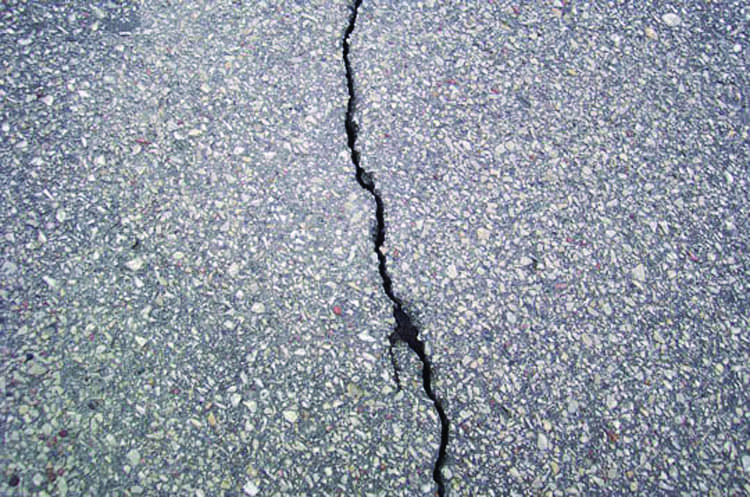
Fatigue or Alligator Cracks
Over time, a flexible asphalt pavement becomes more rigid and is less able to tolerate vertical deflections. This causes tension in the pavement and results in alligator-type cracking. Such cracking can also occur from structural inadequacy, aging, and oxidation. It is generally recommended that alligator areas should be removed and replaced, rather than filled or sealed.
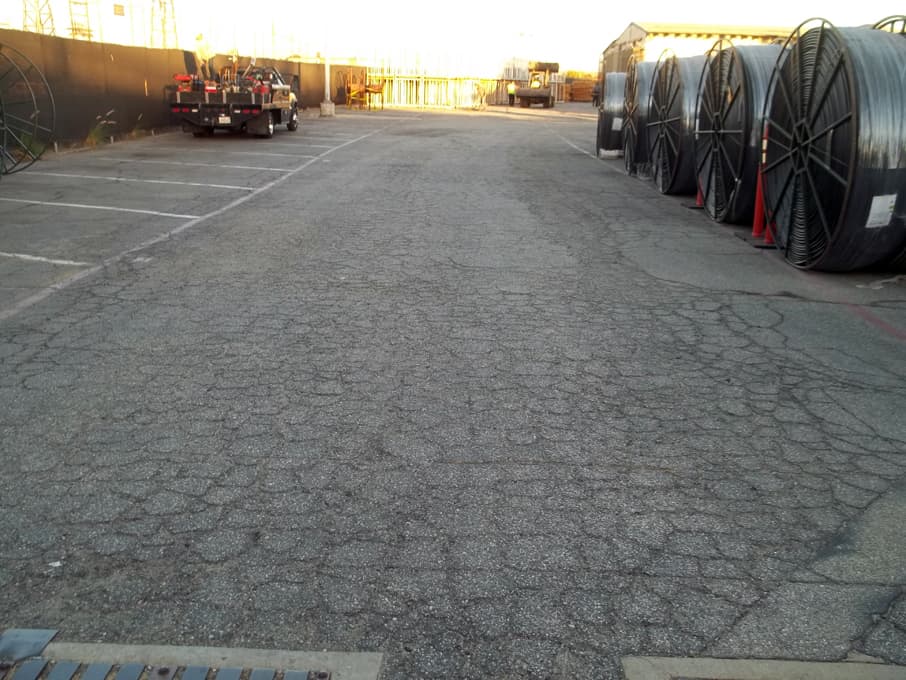
Joint and Longitudinal Cracks
Pavement “joints” are created during initial construction when the edges of two pavement mats are placed adjacent to one another. These constructed joints usually have a lower density of asphalt than that of the surrounding pavement. If the mats don’t bond properly (for a variety of reasons), joint cracks result.
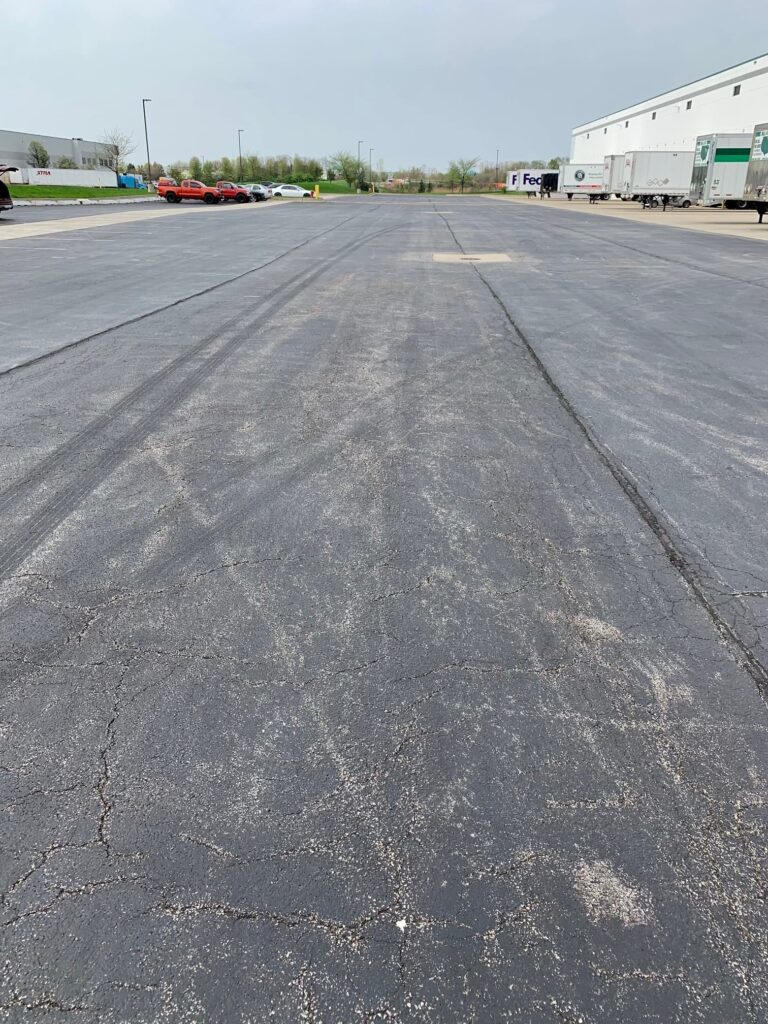
Block Cracks
Visually, this type of cracking forms a square pattern, with cracks intersecting each other at nearly right angles. A common cause of this on parking lots is lack of traffic (steady traffic constantly kneads the pavement and keeps it flexible). Other causes include excessive air voids, low-penetration asphalt, or an overly high plant mix temperature.
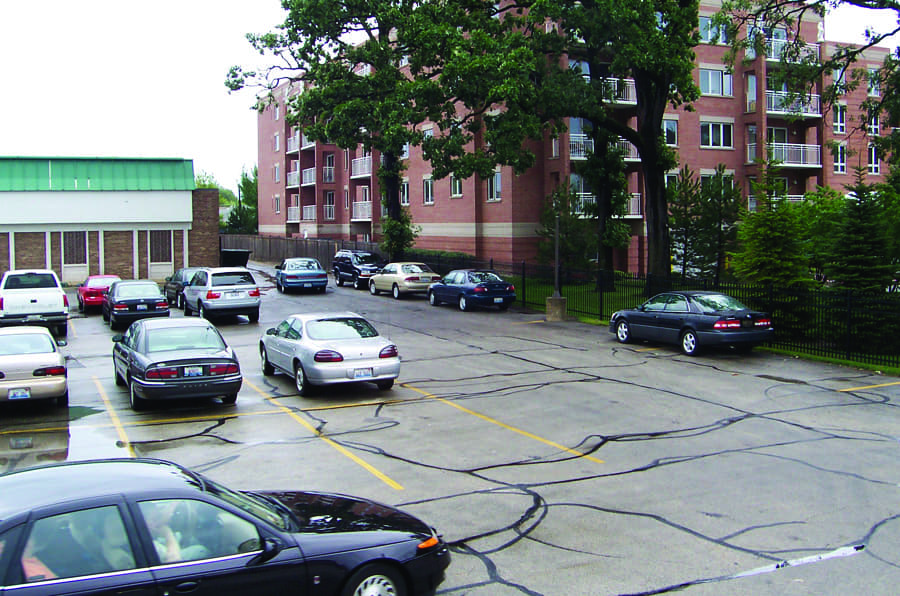
Edge Cracks
Unlike the previous types, edge cracks appear only parallel to and within 18 inches of the pavement edge. Causes include poor base, lack of shoulder support, poor drainage, or frost action.
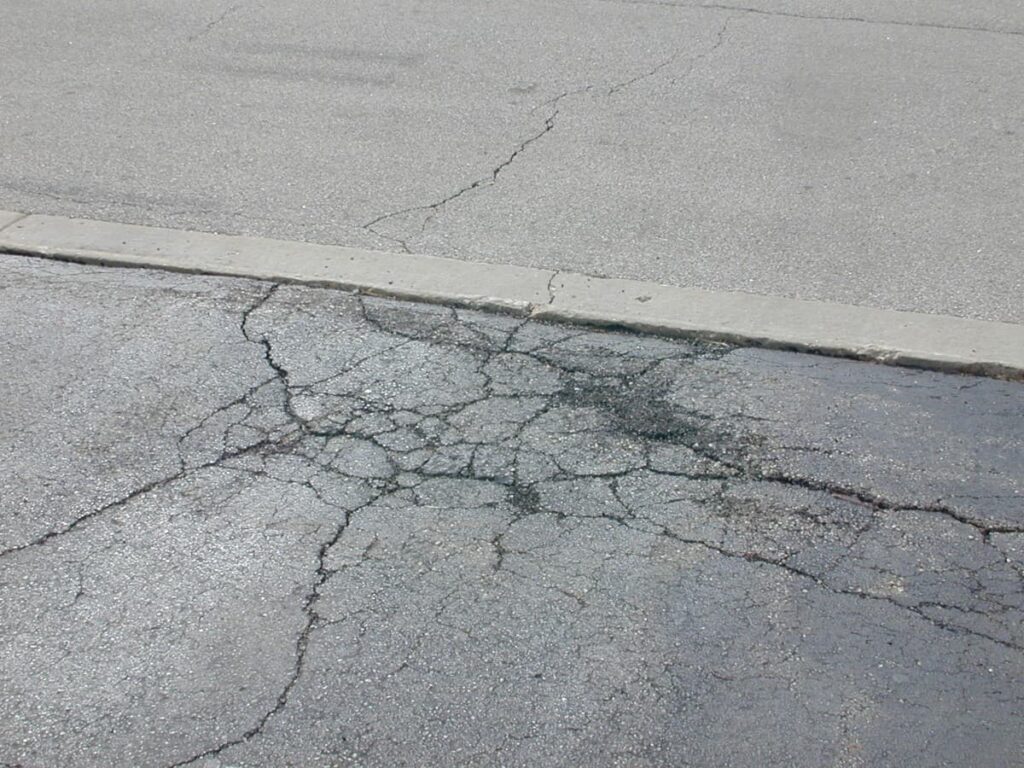
Slippage Cracks
Slippage cracks are usually crescent-shaped and caused by heavy traffic that is stopping, turning, or climbing a hill. Resultant stresses cause a bond failure between the upper and lower pavement layers. The open end of the U-shaped crack always follows the direction of the applied force. These cracks are usually caused due to a contaminant between the different lifts of asphalt.
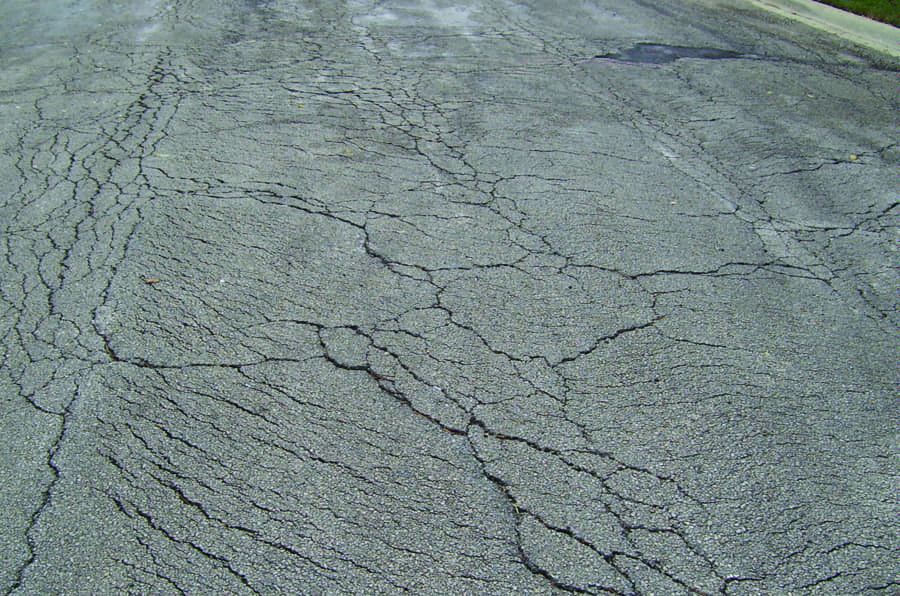
Repair Methods
Properly attending to cracks and treating problems in a timely manner is cost effective, because it delays more expensive restoration such as resurfacing or reconstruction. A budget should allocate funds for crack sealing once every 2 to 3 years.
Cracks measuring 1/4-inch to 1-inch wide should be repaired using a crack sealing or routing method. The sealing method involves cleaning the cracks using a tow-behind air compressor. Next, hot-pour material is injected into and over the uncut crack using a hand-operated wand, and shaped into a bandaid configuration (3- to 5-inches wide and 0.125-inch thick).
Configuration choice depends on factors such as crack type, traffic load, and budget. Crack widening or “routing” is strongly suggested in truck areas, but not for previously sealed pavement cracks.
The routing method creates a proper reservoir in the crack to which material adheres. A routing machine is used to make a channel measuring approximately 1⁄2-inch deep by 1⁄2-inch wide.
Next, the channel is blown clean of dust and debris. Material is injected into the reservoir, using a wand with a special tip, and flush filled.Hot-applied materials must be prepared in special equipment prior to application.
The standard equipment is a double boiler kettle, consisting of an inner chamber that holds and agitates the sealant, and an outer tank fi lled with heat transfer oil to provide even, surrounding heat.
Heated materials (375 to 400 degrees F) include rubberized asphalt (melted rubber used as a modifier), low-modulus rubberized asphalt, fiberized asphalt (fibers used as a modifier), and asphalt rubber (a mixture of paving-grade asphalt cement and between 15 percent and 30 percent granulated reclaimed crumb rubber particles).
How Long Does Cracksealing Last
Though cracksealing is a slightly more costly procedure than crack filling, it provides substantial value due to the prolonged life expectancy of crack sealed pavement, typically eight or more years.
How Often Should I Crackseal
Rose Paving recommends that parking lot owners fix cracks measuring 1/4-inch to 1-inch wide.
When Should You Crackseal
At Rose Paving, we generally recommend performing this preventative maintenance procedure during the Spring and Summer months.
How Do You Fix Cracks In Asphalt
Damaged asphalt is not only aesthetically unappealing, it’s a potential safety hazard and a looming liability. If you see cracked pavement and damaged asphalt around your commercial building, it’s time to call Rose Paving for a consultation.
We’ll work with you to establish a plan that meets your needs, then get to work removing and/or replacing the deteriorated and damaged asphalt that plague your commercial structures. Contact us here to get started.




